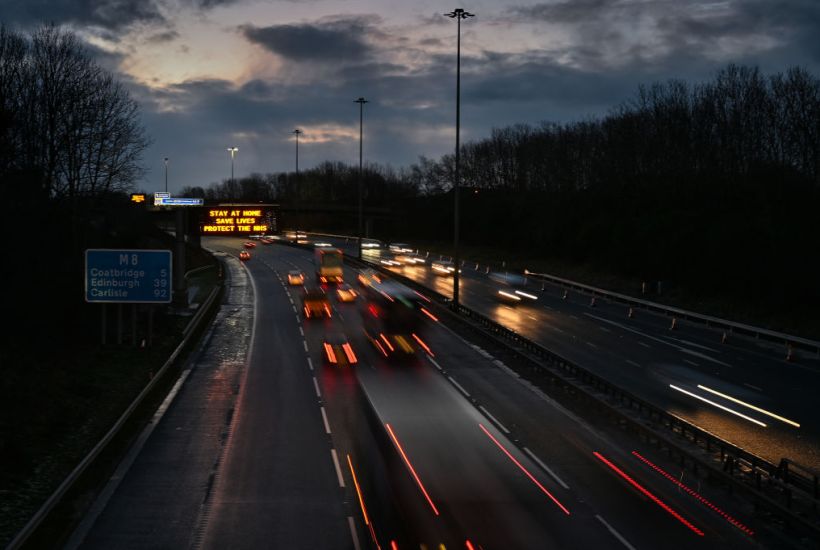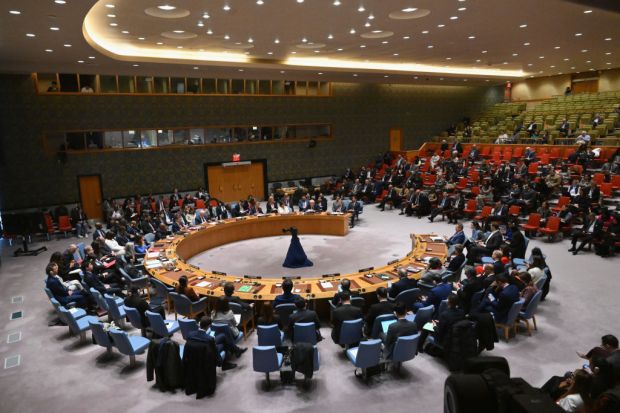If I could wave a wand and reverse just one government policy it would be the expansion of so-called ‘smart motorways’ in the face of what seems the iron determination of the Department for Transport to press ahead with them. These are motorways where the hard shoulder is incorporated into the motorway to create an extra lane – a loss supposedly compensated for with periodic refuges for breakdowns. If you wondered why stretches of the M4 are shut most weekends for works, this is what they are doing. The consequences of such supposed ‘improvements’ can be lethal.
The latest evidence comes from a Sheffield inquest, where the coroner, David Urpeth, ruled that two people who were mown down by a lorry on the M1 after stopping to exchange details following an accident were unlawfully killed. While he said that the primary cause of death had been the carelessness of the lorry driver, the lack of a hard shoulder had ‘contributed to this tragedy’. He said he would be writing to the Transport Secretary to ask for a review, saying: ‘I believe smart motorways, as things stand, present an ongoing risk of deaths.’
Mr Urpeth is far from the first person to use his official platform to cast doubt on the safety of ‘smart motorways’. This time last year, the head of the Police Federation of England and Wales, John Apter, described them as ‘death-traps’ that ‘put lives at risk’. He was speaking the day after a BBC Panorama programme had discovered – via a Freedom of Information request – that 38 people had been killed on smart motorways over the previous five years; on one stretch alone of the M25 around London, the removal of the hard shoulder had resulted in a near 20-fold increase in near-misses. A survey found that only nine per cent of drivers felt safe while using them.
I am not surprised. One reason why I feel so strongly about the perversely-named ‘smart motorways’ is that I would almost certainly not be writing this if the M20 between London and the Channel Tunnel had been among the early examples of the genre. Almost exactly four years ago, I was driving from London towards Ashford, when an Italian-registered lorry pulled out in front of me with no indication, tossing my car in the direction of the hard shoulder.
In these sorts of accidents, apparently, one of two things can happen: your car can be thrown to the right, into the path of speeding traffic or the central barrier, in which case your chances or not good. Or, as in my case, you can be thrown to the left, in which case – if you are lucky, if your steering still works, and the cars behind brake in time – you have a chance of ending up on the hard shoulder.
And that is what happened: a badly damaged car, a lot of laminated glass all over, but neither my husband nor I injured. According to the receptionist at the hotel where we spent the night, accidents like this are a routine occurrence – not helped on the Channel routes by the number of foreign lorries with mirrors either misplaced or unheeded by their drivers.
It should not need to be said that anyone involved in this sort, or indeed any sort, of accident on a ‘smart motorway’ is going to be very fortunate indeed to land at the very place where the powers-that-be have decided to place a refuge. You might be able to do that if you break down, but it is almost impossible if you have been struck by another vehicle. And if you cannot make it to a refuge, you are essentially immobile on a standard motorway lane. Whether you are in or out of your car as the next lorry thunders towards you – as in the case considered by the Sheffield coroner – is not going to make much difference.
Were the perils of ‘smart motorways’ something new, I would be endorsing Mr Urpeth’s call for a review. But they are not. There has already been a review (of a kind). Following Mr Apter’s intervention, the Transport Secretary, Grant Shapps, announced a moratorium on all new ‘smart motorways’ pending a review. Published last March, this prescribed more frequent refuge areas and the rolling out of radar to detect stranded vehicles. Apart from these, and a few other changes, the programme would go on.
Panorama and Mr Apter, however, were by no means the first to call for action on ‘smart motorways’. The House of Commons select committee on transport had held an inquiry of its own a full five years before, which had published a damning report the following year calling for an immediate halt to the programme.
The nub of the issue, it transpired, was that the concept of a ‘smart motorway’ had undergone an apparently small, but crucial, change since first broached. The original idea had been to copy some continental systems, which allow the hard shoulder to be used as an extra lane at busy times and then to revert to its original purpose. This would mostly be around urban areas, where speeds are generally slower, either because of limits or because of the weight of traffic. Such a system was introduced 15 years ago on a stretch of the M42 near Solihull, with few questions asked.
Somewhere along the way, though, this ‘smart’ concept mutated into a purely British variant known as ‘all-lane running’ – which is the not-so-smart motorway that is multiplying today, where the hard shoulder is permanently lost and ‘replaced’ by refuges.
When MPs published their report, the conclusions were damning. They accused the Department of Transport of allowing cost considerations to override safety and recommended ‘an immediate halt to the roll-out of All-Lane Running’, with proposed schemes to be replaced along original, M42, lines.
The Transport Department’s response, which came three months later, was breathtaking in its complacency. Apparently, relieving congestion by providing an extra lane took precedence over the obvious dangers to life and limb from the permanent removal of the hard shoulder, and MPs had no business objecting.
It denied that the permanent removal of the hard shoulder was ‘a radical change’ and essentially blamed motorists for any problems. What was needed was ‘more effective engagement to improve public perception and raise road user awareness of the differences of All-Lane Running’. It also rejected calls for a halt to the programme, insisting that ‘our motorways and major ‘A’ roads are among the safest in the world…The evidence to date of All-Lane Running shows it maintains that high safety standard.’
It is true that UK roads used to be among the safest in the world, and motorways among the safest of those roads, though casualty rates have recently inched up. The notion that ‘smart motorways’ are no more dangerous than others, however, is not the point. People are being killed and injured as a result of their use who would otherwise be alive and well. Plus – as Panorama pointed out – there is evidence of hair-raising near-misses, as I can attest. Even where there is technology to indicate a closed lane, it cannot respond quickly enough to an obstruction. The result may not be an actual collision, but it can be a lot of swerving and screeching of brakes at 70 mph.
Over the years, I have driven long distances in many parts of the world. The country whose roads I was happiest to leave was Poland, where a diabolical combination of bad design, poor maintenance and, how shall we say, an optimistic style of driving makes driving a lottery. A favoured technique – from side roads to motorways – is to create impromptu extra lanes to facilitate overtaking. The result is a poor man’s ‘smart motorway’. The UK’s version is almost as lethal, with far less of an excuse.
Got something to add? Join the discussion and comment below.
Get 10 issues for just $10
Subscribe to The Spectator Australia today for the next 10 magazine issues, plus full online access, for just $10.




















Comments
Don't miss out
Join the conversation with other Spectator Australia readers. Subscribe to leave a comment.
SUBSCRIBEAlready a subscriber? Log in